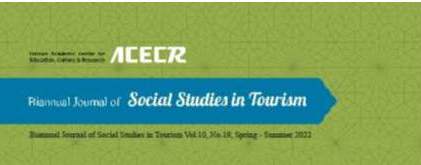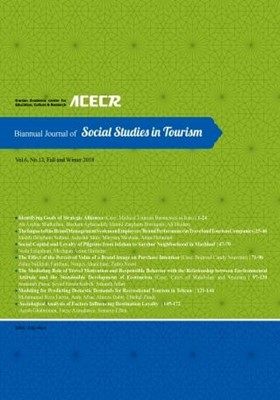-
-
List of Articles
-
Open Access Article
1 - Identifying Goals of Strategic Alliances Case: Medical Tourism Businesses in Iran
Ali Asghar Shalbafian Hashem Aghazadeh hamid Reza Zargham Broujeni Ali Heidari -
Open Access Article
2 - The Impact of the Brand Management System on Employees’ Brand Performance in Travel and Tourism Companies
Ardeshir Shiri Maryam Mesbahi Amin Hemmati -
Open Access Article
3 - Social Capital and Loyalty of Pilgrims from Isfahan to Sarshur Neighborhood in Mashhad
neda eidgahian kaseb Mozhgan Azimi Hashemi -
Open Access Article
4 - The Effect of the Perceived Value of a Brand Image on Purchase Intention Case: Bojnord Candy Souvenir
narges ahanchian zahra nori -
Open Access Article
5 - The Mediating Role of Travel Motivation and Responsible Behavior with the Relationship between Environmental Attitude and the Sustainable Development of Ecotourism Case: Cities of Mahdishar and Semnan
samaneh parsa سید حسن کابلی sakineh jafari -
Open Access Article
6 - Modeling for Predicting Domestic Demands for Recreational Tourism in Tehran
ebtehal zandi -
Open Access Article
7 - Sociological Analysis of Factors Influencing Destination Loyalty
طیبر ظیسبل -
Open Access Article
8 - Sociological Analysis of Factors Influencing Destination Loyalty
طیبر ظیسبل سميه عفتی
-
The rights to this website are owned by the Raimag Press Management System.
Copyright © 2017-2025







